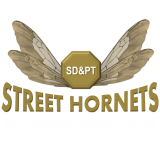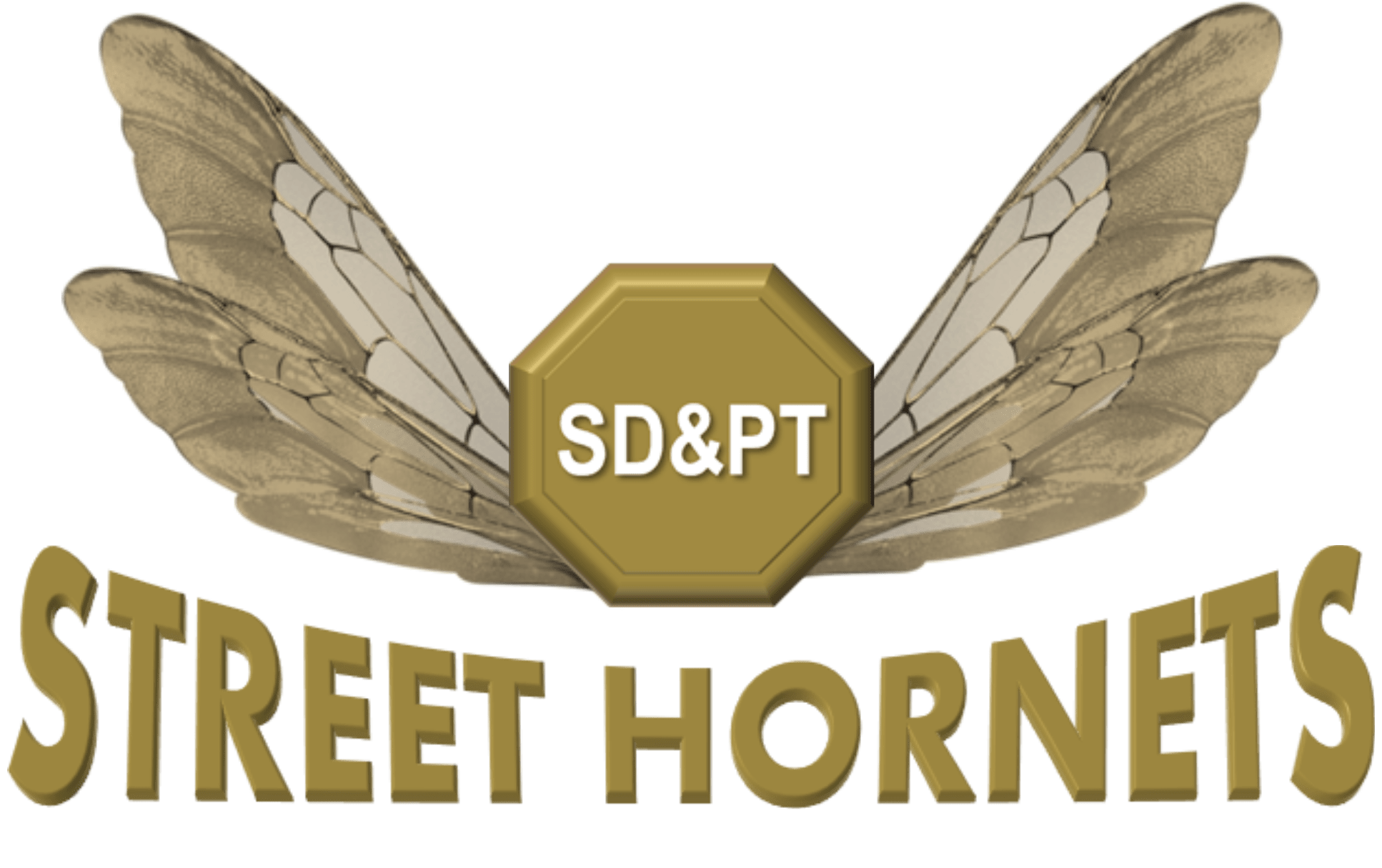Street Hornets Self-defense & Personal Training
...all hail the underdogs, all hail the Street Hornets!
Self-Defense Patch Progression
Dynamic training with a purpose!
NEW Self-defense System combined with Personal Training fundamentals:
- Online or
- In-person
Personal training fundamentals elevate your results & training experience!
NEW highly effective self-defense system which combines practical & extremely effective techniques with street awareness!
It is important to know how the engine works if you want to optimize its performance. That is why Street Hornets was built on the foundation of personal training. We believe that it is essential to understand the anatomy fundamentals in order to better meet goals.
Personal Training fundamentals ensures workouts are efficient and effective. This is achieved through a deep understanding of anatomy, energy systems, how muscle develops and how the body works.

Personal Training meets Street Self-defense
No belts: 6 Patches open & FREE
Personal Trainers certified by CanFitPro
What makes Street Hornets different...patches.... &
- MMA DNA Base
- Scientific Street Fighting meets Scientific Training
- Street Radar
- Tactical ‘sphere’ response
- Defense forms the attack
- Behind the limbs
- Powerful low leg kicks
- Multiple attacker strategies
- NEW highly effective Self-defense system
- Combines cardio with strength training
- Patches progression - from Base to Vertex
- Patch grading via the ‘virtual dojo’ online or in-person
- Six patches completely open & FREE - just pay to grade
- No intimidating martial art studios
- Package Discounts; 2's or groups
- Access to content (24-7)
- Incorporates personal training fundamentals
- Minimal equipment required – rank five patches solo
- Elite/Vertex locked patches -by invitation only
- No long-term commitments or annual membership
Street Hornets' Principles
Confidence
Respect your knowledge, self-discipline ‘iron sharpens iron’- ‘Hornets protect Hornets’
Composure
Composure with self-control…the art of ‘fighting, without fighting’
Character
Do what’s right, have integrity & be humble – ‘Hornets develop Hornets’
Golden Principle: 'Protect the Sphere'
Train to be ready, aware, & to recognize dangers! Always avoid or minimize conflict - act decisively...get away!
Failure to adhere to the Street Hornets principles may result in practitioners being de-patched.
Preparation
As with all physical activities regiments, you should first ensure you’re in a position to safely start your journey.
You should ask the following questions:
1) Has your doctor ever said that you have a heart condition OR high blood pressure?
2) Do you feel pain in your chest at rest, during your daily activities of living, OR when you do physical activity?
3) Do you lose balance because of dizziness OR have you lost consciousness in the last 12 months? (Please answer NO if your dizziness was associated with over-breathing {including during vigorous exercise}).
4) Have you ever been diagnosed with another chronic medical condition (other than heart disease or high blood pressure)?
5) Are you currently taking prescribed medications for a chronic medical condition?
6) Do you currently have (or have had within the past 12 months) a bone, joint, or soft tissue (muscle, ligament, or tendon) problem that could be made worse by becoming more physically active? Please answer NO if you had a problem in the past, but it does not limit your current ability to be physically active.
7) Has your doctor ever said that you should only do medically supervised physical activity?
If you answer YES to any of the above, you should seek medical approval prior to training.

Instuctors

Ben Roberts 'The Praying Mantis'
Lead Instructor & Founder, Level: Advanced Brown Patch

Kole 'Eliminator' Parker
Instructor. Level: Advanced Brown Patch
- Over 25 years martial arts experience
- Jeet Kune Do since 1996
- Co-founder Defender Martial Arts – UK 1999
- Grappling & BJJ since 2001
- Muay Thai since 2005
- Founder of Street Hornets Self-Defense System – CA 2022
- Street Hornets Certifier of Instructors
- Jeet Kune Do: Western boxing, Fencing, Wing Chun
- Defendu
- Defender
- Muay Thai
- Grappling & submissions
Online: Strength & Conditioning
Street Hornets: Quick 5
- 30 seconds: jab,
- 30 seconds: cross,
- 30 seconds: hook,
- 10 seconds: slips left & right,
- 30 seconds: slip, jab, cross, hook
- 30 seconds: Squats ending with a knee (alternate knees)
- 10: Sprawls
- 30 seconds: Mountain Climbers
- 30 seconds: Crunch, cross right, cross left
- 2 minutes: Shadow freestyle
Street Hornets: 300
- 100: jabs left / right,
- 100: hooks left / right,
- 100: uppercuts left / right,
- Quick 10
- Quick 15
- All around the world!
The Human Body
The core, is the center – hips, hips, hips.
Strong core muscles are essential. That’s because weak core muscles can lead to more fatigue, less endurance and injuries.
Building your core has a multitude of benefits.
- Improves Balance
- Increases Stability
- Boosts Your Power
- Supports Strength Training
Nervous System: to perform coordinated and skilled movements, you must have coordination between the muscular & nervous system. 2 parts of the nervous system: central nervous system (CNS), peripheral nervous system (PNS).
Organization of the nervous systems: CNS: composed of the brain and spinal cord. Control Centre. PNS: composed of nerves that connect the extremities to the brain. Delivers information about all body parts to the brain (CNS) for processing.
ATP (adenosine triphosphate) is our energy currency, if you want to perform you pay for it in ATP.
- Anaerobic: without oxygen,
- Aerobic: with oxygen.
Interaction of the energy systems: at rest: only small amounts of energy are needed, and they are supplied almost exclusively through aerobic metabolism of fatty acids.
Steady state exercise: after the supply of oxygen meets the demand, the muscle cell create ATP using the breakdown of glycogen and glucose through the aerobic system.
Strenuous: during strenuous exercise when energy demand increases rapidly and intensity is high, the anaerobic system will have to provide ATP.
During Recovery: although the need for a higher supply of oxygen is reduced or eliminated after an exercise session, the body continues to take on high levels of oxygen than it needs at rest. To pay off the oxygen debt as well as to facilitate recovery. Longer you work – longer the recovery.
- ATP/CP Phosphagen system (1ATP) can continue until creatine phosphate depleted in the cell 10 seconds – recovery 3-4 minutes
- Anerobic glycolytic system (2-3ATP) 10 seconds to 2 minutes
- Aerobic glycolytic system (38ATP) moderate post 2 minutes
- Fatty Acid oxidation system (100+ATP) low intensity, high amounts of oxygen
Agonist & Antagonist: The muscle that provides most of the tension is referred to as the prime mover, or agonist. The muscle that performs the opposite movement to the agonist, generally located on the opposite side of the limb, is called the antagonist.
Hypertrophy: muscles growing stronger and larger, we see increases in: muscle fibre size, muscle contractile strength, coordination among muscle groups, muscle fibre recruitment, tendon and ligament contractile strength, and bone strength.
Fast twitch: Speed/force, Anaerobic, Produce and use ATP quickly (also fatigue quickly)
Slow twitch: Endurance, Aerobic, High amount of mitochondria
Slow Twitch Fibres (endurance): contain a higher amount of mitochondria compared with fast twitch fibres, (aerobically). You can’t change your makeup, but can train fast twitch.
Fast Twitch Fibres (speed/force): have the ability to produce and use ATP more quickly, (anaerobically).
Isometric Training: Isometric training involves static muscle contraction in which the length of the muscle does not change when force is applied against a fixed resistance (e.g., static plank, wall sit, yoga postures). Isometric training has certain limitations.
Isotonic Training: Isotonic training involves both concentric and eccentric muscle contractions. In a concentric contraction, the muscle shortens as the joint moves against the force of resistance. In an eccentric contraction, the muscle lengthens as the joint moves back toward its starting point. Isotonic training includes either constant or variable resistance.
Range of motion (ROM): refers to the amount of movement around a particular joint.
PROM / AROM: PROM (Passive Range of Motion) in any joint is normally greater than AROM (Active Range of Motion) because the individual is relaxed and doesn’t need to activate stabilizing or postural muscles.






